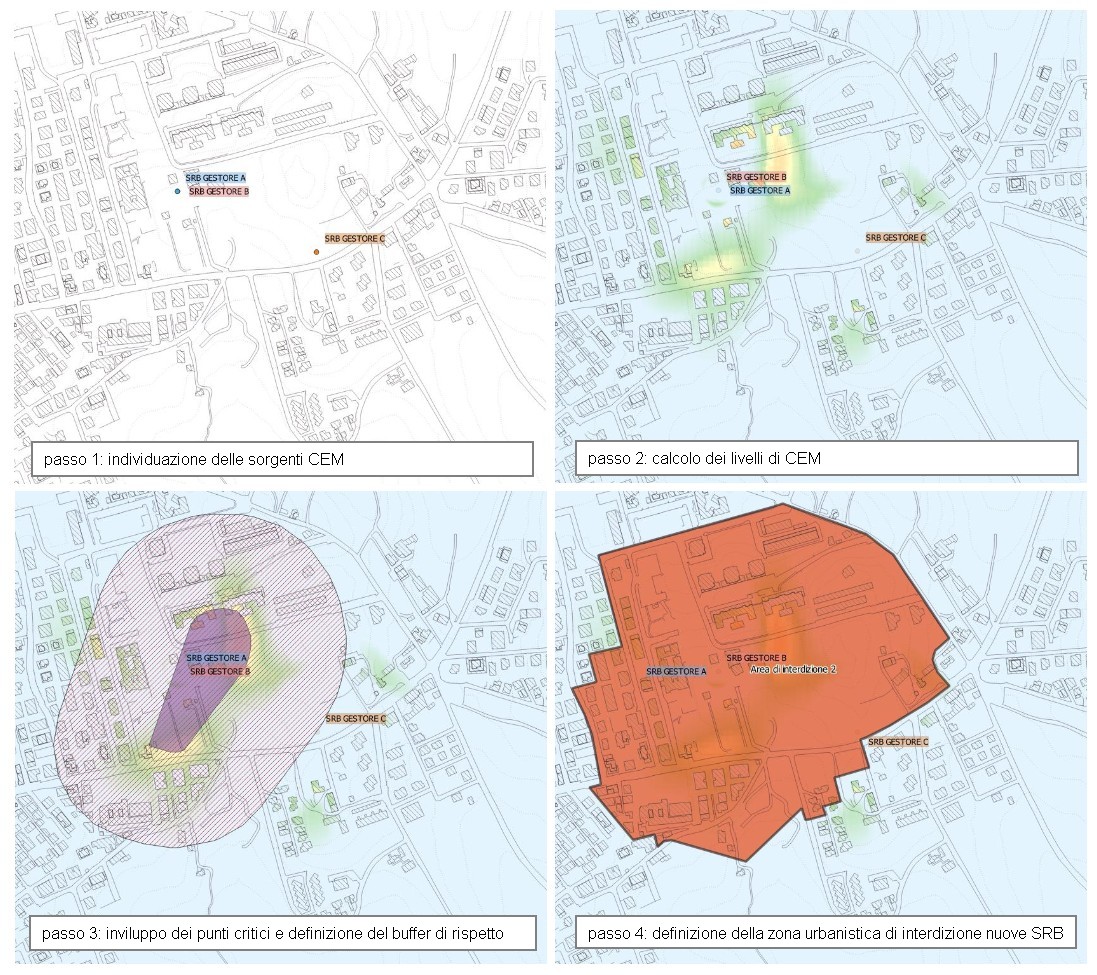With the aim to regulate what is commonly called “electromagnetic pollution,” that is, more correctly, exposure to the artificial electromagnetic fields emitted nowadays by the most varied technologies and devices (especially telephone and radio and television repeater devices and installations and electrical conductors and installations) and to meet the fears of the population, many local administrations simply field a regulation with prohibitions or various prescriptions regarding the placement of installations, but case law on the subject has pointed out the substantial futility of a municipal regulation that simply identifies areas with installation prohibitions without technical evaluations, since current legislation equates telecommunications infrastructure with primary urbanization works, and in this case operators/operators usually prevail in any disputes with municipal administrations. Even simple prescriptions of areas or buffer distances are useless and ineffective unless framed in technical assessments that are specific to the area under consideration and do not preclude the feasibility of the telecommunications infrastructure.
Indeed, in the event of litigation, technical justification (and thus an analysis of electromagnetic field levels for their minimization) for the adoption of location measures or prohibition zones must be demonstrated, failing which the relevant Municipal Regulations will be, in whole or in part, invalidated.

Example of step-by-step processing for defining no-go areas for new Radio Base Stations.
Regarding the technical authorizations provided by the Health Agencies, it should be underlined that these opinions guarantee compliance with the maximum permitted values, but do not constitute planning to achieve the lowest possible level of exposure; furthermore, these authorizations may not be required for simplified procedures such as self-certifications in the above types; in these cases the Agency simply transposes these authorizations, without issuing any opinion. In addition, new regulations on monitoring, which require analyses and measurements with time averages up to 24 hours, actually make many field control actions by the Agencies themselves much more laborious.
Instead, a Plan (or Program) for the location of installations and related antennas, briefly sometimes also called “Plan for antennas,” represents the only solution provided by law, which allows municipalities to govern the installations of telecommunication and in particular mobile telephony installations on their territory, limiting the electromagnetic impact, favoring – other things being equal – installations on suitable sites and preventing possible disputes with telecommunications operators.
By adopting this Plan, therefore, the municipality has the ability to affect the development of networks and plan the optimal location of facilities. In the absence of this technical tool, the municipality has no say in the siting process. Finally, it is easy to see that the later the Municipality has such a Plan, the more difficult it will be for the Municipal Administration to control and direct the management, control and proliferation of telecommunications facilities that emit electromagnetic waves.
Our Technical Office provides all consulting services in the field of environmental artificial electromagnetic field assessment: planning, design, evaluation and specific instrumental measurements.
It is important to emphasize that a Location Plan for telecommunication facilities (or electromagnetic sources in general) has no meaning and validity if it does not contain calculations for a quantitative assessment of the possible configurations of electromagnetic fields for the purpose of their minimization.
We also provide expert advice for everything related to disclosure, explanation and assistance for EMF issues, also in order to give correct technical information to support administrative decision makers as well as the public.
For more information or to request our services you can contact us at our contact details.

